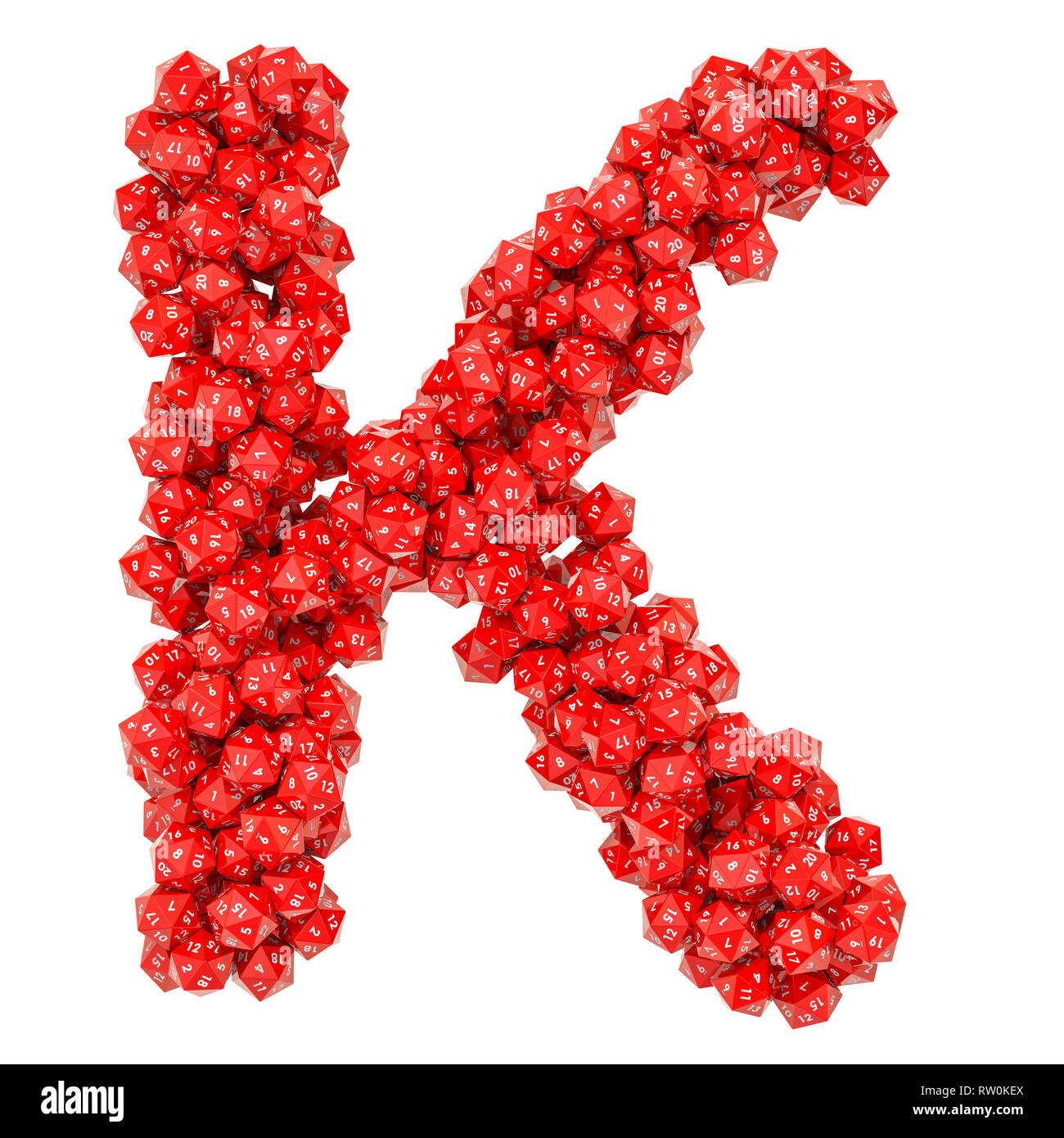K.west: Exploring The Diverse Roles Of 'K' In Today's Tech
It's pretty wild, when you stop to think about it, just how often the single letter 'K' shows up in our digital lives. From the inner workings of your computer to the screens you look at every day, this little letter, or so it seems, carries a lot of weight. We often see it, but do we really grasp what it means in each situation? It's kind of like a secret code hiding in plain sight, and honestly, it shapes a big part of how we interact with technology.
You know, whether you are building a new computer or just trying to figure out why your video looks a certain way, that 'K' pops up. It's not just a random letter; it's a marker, a designation, a unit of measure, and sometimes, well, it's a key to unlocking capabilities. We are going to take a closer look at what 'K' represents across different tech areas, pulling back the curtain on its varied meanings and why they matter to us, actually.
This journey through the world of 'K' is really about understanding the small details that make a big difference in how our devices perform and how we experience them. So, get ready to explore the many faces of 'K' and see just how much this tiny character influences the tech that surrounds us, you know, every single day.
Table of Contents
What Does 'K' Mean in Processors?
'K' in Display Resolutions: 2K, 4K, and Beyond
The 'K' in Temperature and Materials Science
Software and System 'K's: From Shortcuts to Quantization
Frequently Asked Questions About 'K' in Tech
What Does 'K' Mean in Processors?
When you are looking at computer processors, especially from Intel, you will often spot a 'K' or 'KF' right at the end of the model name. This little letter, basically, tells you something important about the chip's capabilities. For instance, if you see something like a "13600KF," that 'K' means the processor has an unlocked multiplier. What that means for you is the ability to adjust its clock speed beyond the factory settings, which is a process people call overclocking. This can give you a bit more performance, especially for demanding tasks like gaming or heavy-duty content creation, if you know how to do it right, anyway.
It's also worth thinking about the motherboard you pair with these 'K' series processors. Take the "华硕B760M-K" for example, which is, you know, an entry-level model in ASUS's Master series. While it can technically run a powerful chip like the 13600KF, you might find that if you really push the processor with heavy stress tests, like a full-on "拷机" (torture test), the motherboard might not be able to provide enough stable power to let the CPU run at its absolute maximum potential for extended periods. However, for everyday use, and especially for just playing games, pairing a 13600KF with a B760M-K can give you a pretty good experience, really. It just means you might not get every last bit of performance out of that 'K' chip in extreme situations.
A really important thing to be aware of, actually, if you are thinking about getting an Intel processor, is the current market situation with used chips. There are, apparently, a lot of "拆机处理器" (disassembled/pulled processors) from Intel's 13th and 14th generation Core series floating around online. These include, pretty much, all the models that have that 'K' suffix. It's a bit of a concern because some of these might be mixed in with chips that aren't quite what they seem, perhaps affecting their performance or longevity. So, it is definitely a good idea to be cautious and make sure you are buying from a reputable source when you are looking for these 'K' series CPUs, to be honest.
'K' in Display Resolutions: 2K, 4K, and Beyond
When you are talking about screens, whether it's your computer monitor or a big TV, the 'K' often shows up in terms of resolution, like "2K" or "4K." This can sometimes cause a little confusion, you know, because the numbers don't always seem to line up as neatly as you might expect. For instance, a "2K" display, which typically has a resolution of 2560x1440 pixels, is not, actually, double the pixel count of a standard "1080P" (1920x1080) display. It's more like 1.7 times the pixels, which is a bit of a difference, really.
On the other hand, when we talk about "4K," that's a whole different story. A true "4K" resolution, often 3840x2160 pixels, literally has four times the number of pixels as a 1080P display. This means a much sharper and more detailed picture, especially on larger screens. So, if you are wondering what "pixel points" are, just grab your phone, basically, and look really closely at the screen. Those tiny, tiny dots that make up the image? Those are the pixels. The more of them packed into a given space, the clearer and crisper the image appears, you know, on your display.
The naming convention for "2K" is, honestly, a bit of an interesting one. Many people think it came about because 2560x1440 resolution sits, sort of, in between 1080P and 4K in terms of pixel count and overall visual quality. Since it's lower than "4K" but definitely better than "1080P," and the horizontal pixel count starts with a '2' (2560), people just started calling it "2K." It was, you know, a convenient way to describe something that was better than the old standard but not quite the new top-tier resolution. So, in a way, it's a name that just stuck because it made sense to people, even if it's not strictly mathematically precise like "4K" is when compared to 1080P.
The 'K' in Temperature and Materials Science
Beyond computers and displays, the letter 'K' also plays a very important role in science, especially when we talk about temperature and the properties of materials. In this context, 'K' stands for Kelvin, which is a unit of temperature on the absolute temperature scale. When you see a measurement like "20℃," which is 20 degrees Celsius, this can also be expressed in Kelvin. The Kelvin scale is widely used in scientific and engineering fields because it starts at absolute zero, the theoretical point where all molecular motion stops, which is, basically, -273.15 degrees Celsius. So, when you see "1E-6 /K" or "1E-6 /℃," that's talking about a change per Kelvin or per Celsius degree, which are, honestly, interchangeable for temperature *differences*.
One area where Kelvin, or rather the concept of temperature change, is really significant is in understanding the "金属膨胀系数" (metal expansion coefficient), also known as CTE, or Coefficient of Thermal Expansion. This property tells us how much a material will expand or contract when its temperature changes. It's a rather crucial material characteristic, you know, especially when you want to avoid "相位突变" (phase transition) problems in engineering and manufacturing. Most materials, as a general rule, tend to expand when they get hot. This might seem like a simple idea, but it has big implications for how things are designed and built.
If we use materials with different expansion rates in something like a complex electronic device or a large structure, and they are exposed to varying temperatures, those different expansion rates can cause stress, warping, or even breakage. For example, if two different metals are joined together and one expands much more than the other when heated, it can lead to cracks or separation over time. So, understanding and managing the CTE is, actually, pretty vital for making sure products are durable and reliable. It's all about making sure that, you know, the components play nicely together as temperatures shift.
Software and System 'K's: From Shortcuts to Quantization
The letter 'K' also shows up in some pretty useful ways within our operating systems and specialized software, offering shortcuts and even defining complex data processes. For example, on a Windows computer, pressing "Win + K" together is a really handy shortcut. What it does, basically, is call up the system's built-in wireless projection feature. This lets you quickly connect your computer to a compatible display, like a smart TV, a projector, or one of those wireless display adapters. It's super convenient when you want to share your screen without fiddling with cables, you know, making presentations or watching movies on a bigger screen a breeze.
And then there's "Win + P," which is another related shortcut. Once you've actually connected to a display using Win + K and started projecting, Win + P lets you quickly switch between different display modes. You can choose to "duplicate" your screen, which shows the same thing on both displays, or "extend" it, which gives you more screen space by treating the external display as an addition to your main one. So, these 'K' and 'P' shortcuts, essentially, work hand-in-hand to make managing external displays much simpler, which is pretty neat, honestly.
In the world of artificial intelligence and machine learning, particularly with large language models, you might encounter "K series quantization methods." These are, basically, advanced techniques used in software like Llama.cpp to significantly reduce the memory footprint of these huge models. The "K" suffix here indicates a particular approach to making the models smaller and faster, often by compressing the data they use. The main characteristic of these 'K' series methods is that they are "层次化" (hierarchical), meaning they apply different levels of compression to different parts of the model. This means, you know, that the models can run more efficiently on less powerful hardware, which is a pretty big deal for making AI more accessible. It's a way of making these complex systems a bit more manageable, to be honest, without losing too much performance.
Frequently Asked Questions About 'K' in Tech
What does the 'K' in CPU models like 13600KF actually mean?
The 'K' in CPU model names, like 13600KF, typically indicates that the processor has an unlocked multiplier. This means, basically, that you can manually adjust its clock speed, a process known as overclocking, to potentially get more performance out of it. The 'F' usually means it doesn't have integrated graphics, so you'd need a separate graphics card, you know, for display output.
Is 2K display resolution truly twice as good as 1080P?
Not exactly. While 2K (2560x1440) is definitely an improvement over 1080P (1920x1080), it doesn't have twice the number of pixels. It's about 1.7 times the pixel count. 4K resolution, on the other hand, has four times the pixels of 1080P, offering a much more noticeable jump in clarity, you know, on your screen.
How does the 'K' in temperature units relate to everyday life?
The 'K' in temperature units refers to Kelvin, which is a scientific temperature scale. While we usually use Celsius or Fahrenheit in daily life, Kelvin is crucial in fields like materials science and engineering. It helps professionals understand how materials behave at different temperatures, like how much they expand or contract, which is pretty important for designing durable products, to be honest. You can learn more about technology terms on our site, and also check out this page for more detailed explanations.

Letter,k,capital letter,alphabet,abc - free image from needpix.com

Capital Letter K Images

Top 999+ k letter images in heart download – Amazing Collection k